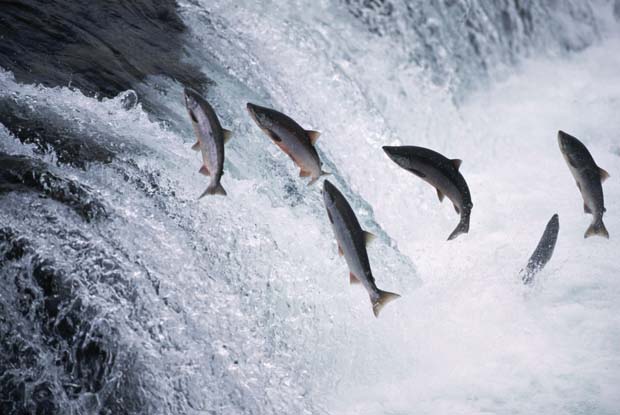[dropcap]T[/dropcap]he United States has led the world in dam building – blocking and and harnessing rivers for a variety of purposes, including hydropower, irrigation, flood control, and water storage.
The US Army Corps of Engineers has catalogued at least 80,000 dams greater than 6-feet along the waterways of the United States . . .
and at least tens of thousands of smaller dams pepper our rivers and streams. Secretary of the Interior Bruce Babbitt once observed that, “. . . on average, we have constructed one dam every day since the signing of the Declaration of Independence.”
While dams can benefit society, they also cause considerable harm to rivers. Dams have depleted fisheries, degraded river ecosystems, and diminished recreational opportunities on nearly all of the nation’s rivers. Today, many dams are old, unsafe or no longer serve their intended purposes.
For many of these dams where the negative impacts of the dam on the river and riverside communities outweigh the benefits of the dam, dam removal may be a reasonable approach to restore healthy rivers and riverside communities. Most of the nation’s 80,000 large dams, however, are not likely candidates for removal, but this does not mean that our nation’s rivers are destined to be as heavily impacted by these dams as they are today. Most dams across the country could be operated in a fashion that reduces their current impacts on the river.

Maine Department of Marine Resources biologist Nate Gray is pictured sitting below Benton Falls Dam, in Maine.
“Look underneath you,” says Gray, a burly biologist for the state of Maine. He reaches down to the grate floor of a steel cage perched on a dam straddling the Sebasticook River, and pulls back a board revealing the roiling river 30-feet below. “All you see is fish.” Photo Christian Science Monitor.
How Do Dams Damage Rivers?
Dams reduce river levels
- By diverting water for power, dams remove water needed for healthy in-stream ecosystems. Stretches below dams are often completely de-watered.
Dams block rivers
- Dams prevent the flow of plants and nutrients, impede the migration of fish and other wildlife, and block recreational use. Fish passage structures can enable a percentage of fish to pass around a dam, but multiple dams along a river make safe travel unlikely.
Dams slow rivers
- Many fish species, such as salmon, depend on steady flows to flush them downriver early in their life and guide them upstream years later to spawn. Stagnant reservoir pools disorient migrating fish and significantly increase the duration of their migration.
Dams alter water temperatures
- By slowing water flow, most dams increase water temperatures. Other dams decrease temperatures by releasing cooled water from the reservoir bottom. Fish and other species are sensitive to these temperature irregularities, which often destroy native populations.
Dams alter timing of flows
- By withholding and then releasing water to generate power for peak demand periods, dams cause downstream stretches to alternate between no water and powerful surges that erode soil and vegetation, and flood or strand wildlife. These irregular releases destroy natural seasonal flow variations that trigger natural growth and reproduction cycles in many species.
Dams fluctuate reservoir levels
- Peaking power operations can cause dramatic changes in reservoir water levels — often up to 40 feet — which degrade shorelines and disturb fisheries, waterfowl, and bottom-dwelling organisms.
Dams decrease oxygen levels in reservoir waters
- When oxygen-deprived water is released from behind the dam, it kills fish downstream.
Dams hold back silt, debris, and nutrients
- By slowing flows, dams allow silt to collect on river bottoms and bury fish spawning habitat. Silt trapped above dams accumulates heavy metals and other pollutants. Gravel, logs and other debris are also trapped by dams, eliminating their use downstream as food and habitat.
Dam turbines hurt fish
- Following currents downstream, fish can be injured or killed by turbines. When fish are trucked or barged around the dams, they experience increased stress and disease and decreased homing instincts.
Dams increase predator risk
- Warm, murky reservoirs often favor predators of naturally occurring species. In addition, passage through fish ladders or turbines injure or stun fish, making them easy prey for flying predators like gulls and herons.
Connect with American Rivers . . .








